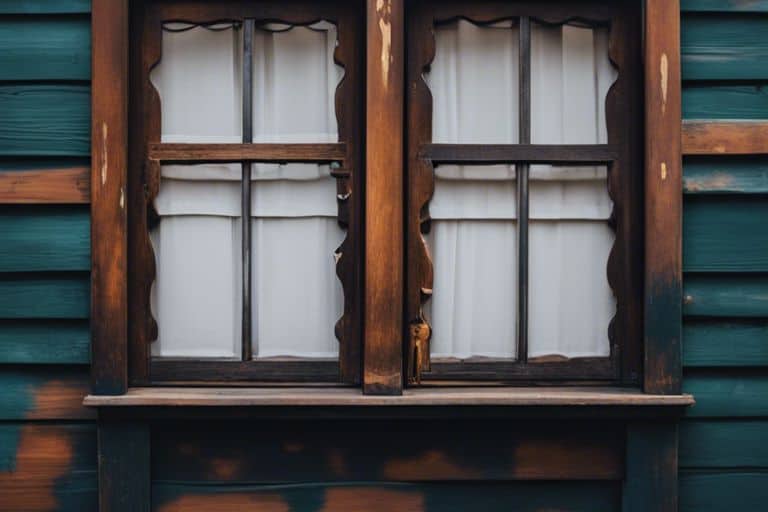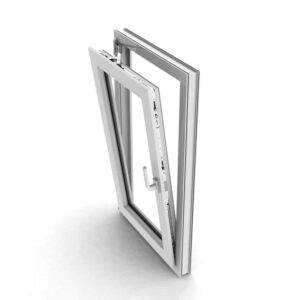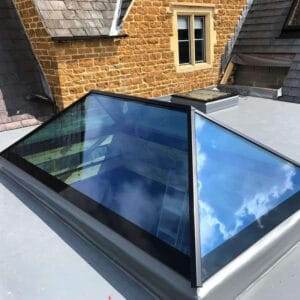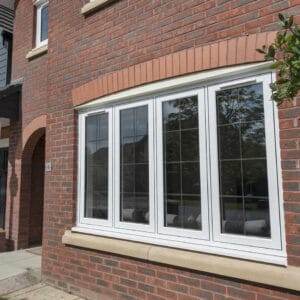Just because you’re commenceing on a DIY painting project for your wooden windows and doors doesn’t mean it has to end in disaster. To ensure a successful outcome, steer clear of neglecting weather conditions when painting, rushing between steps, and using incorrect materials. Applying paint in unsuitable weather can lead to uneven drying and poor adhesion, while rushing may result in sloppy finish and missed spots. Using the wrong type of paint or primer can cause peeling or cracking, compromising the appearance and longevity of your wooden fixtures. By taking your time, following instructions, and using the right tools and materials, you can achieve a professional-looking finish that will stand the test of time.

Key Takeaways:
- Neglecting weather conditions: It is crucial to avoid painting wooden windows and doors during rainy or humid weather, as this can result in poor adhesion and uneven drying.
- Rushing between steps: Taking the time to properly prepare the surface, apply primer, and allow sufficient drying time between coats is imperative for a professional finish.
- Using incorrect materials: Choosing the wrong type of paint or primer can lead to peeling, cracking, or discolouration over time. Be sure to use products specifically designed for wooden surfaces.

Understanding Wood Surfaces
While undertaking a painting project on wooden windows and doors, it is crucial to have a good understanding of the wood surfaces you will be working on.
Types of Wood and Their Characteristics
With different types of wood come various characteristics that can affect how paint adheres and holds up over time. It is crucial to consider the porosity, grain pattern, hardness, and moisture content of the wood before starting your painting project. Here is a breakdown:
| Wood Type | Characteristics |
| Pine | Softwood with visible grain patterns |
| Oak | Hardwood with prominent grain and high durability |
| Maple | Hardwood with a smooth, even grain |
| Mahogany | Durable hardwood with rich, dark colour |
| Redwood | Softwood with natural resistance to rot and decay |
Factors Affecting Painting on Wood
Assuming you have chosen the right type of wood for your windows and doors, there are still several factors that can impact the outcome of your painting job. It is crucial to consider humidity levels, temperature fluctuations, wood preparation, priming, and using the correct paint.
- Humidity Levels: High humidity can lead to poor paint adhesion and drying issues.
- Temperature Fluctuations: Extreme temperatures can cause the paint to crack or peel.
- Wood Preparation: Proper sanding and cleaning are crucial for a smooth painting surface.
- Priming: Using a primer helps paint adhere better and ensures a longer-lasting finish.
- Correct Paint: Using the appropriate paint for wooden surfaces is crucial for durability and aesthetics.
This information is crucial for a successful painting project on your wooden windows and doors. Trust Express Windows Group for all your wooden window and door needs.
Preparing to Paint
Step-by-Step Surface Preparation Guide
If you want your wooden windows and doors to look their best and last longer after a fresh coat of paint, thorough preparation of the surface is crucial. Follow this step-by-step guide to ensure a smooth and successful painting process:
| Preparation | Steps |
| Clean | Remove dirt, dust, and grime using detergent and water |
| Repair | Fill in any cracks or holes with wood filler and sand down rough patches |
| Prime | Apply a suitable primer to ensure proper adhesion of the paint |
| Protect | Use masking tape to cover areas you don’t want to paint |
Tips for Selecting the Right Primer and Paint
Primer and paint selection is crucial for achieving a long-lasting and quality finish on your wooden windows and doors. When choosing these products, consider the following tips:
- Quality Matters: Invest in high-quality primer and paint to ensure durability and protection
- Compatibility Check: Make sure the primer and paint are compatible with each other for a smooth application and finish
- Finish Type: Decide on the finish you want (e.g., gloss, satin, matte) based on your preferences and the location of the windows and doors
For instance, using a cheap primer may lead to poor adhesion, causing the paint to peel or chip easily. Knowing the right product combinations and finish types will help you achieve professional results and protect your wooden surfaces effectively.
The Painting Process
Many DIY enthusiasts take on painting projects for their wooden windows and doors without fully understanding the intricacies involved. To ensure a successful outcome, it is crucial to be aware of common pitfalls and how to avoid them. For a comprehensive guide on this topic, check out How To Avoid Common Painting Mistakes.
Techniques for a Smooth Application
Little details can make a big difference when it comes to painting wooden windows and doors. To achieve a smooth and professional finish, it is crucial to use the right tools, such as high-quality brushes and paint rollers. Additionally, take your time and apply thin, even coats to prevent drips and streaks.
Avoiding Common Mistakes During Painting
The key to a successful painting project lies in proper preparation and execution. The smallest oversight can lead to unsatisfactory results and potentially damage your wooden windows and doors. During the painting process, pay attention to weather conditions, as extreme temperatures or humidity can affect the drying process. Use a primer to ensure better adhesion and durability of the paint. Avoid rushing between steps and allow sufficient drying time between coats for a flawless finish.

Post-Painting Tips
After completing the painting of your wooden windows and doors, it is important to follow these tips to ensure a long-lasting finish:
Pros and Cons of Sealants and Finishes
Now, let’s examine into the pros and cons of using sealants and finishes on wooden windows and doors:
| Pros | Cons |
| Provides protection against weather elements | May require frequent reapplication |
| Enhances the appearance of the wood | Can trap moisture if not applied correctly |
| Helps to prevent rot and decay | Some finishes contain harmful chemicals |
| Improves durability of the wood | May alter the natural look of the wood |
Maintenance Tips for Long-Lasting Results
Assuming you want to keep your wooden windows and doors in top condition, follow these maintenance tips:
- Regularly check for any signs of wear or damage
- Clean the windows and doors with a gentle cleaner
- Reapply sealant or finish as needed
After all, proper maintenance is key to preserving the beauty and functionality of your wooden windows and doors.
To wrap up
From above, it’s crucial to be aware of the frequent pitfalls in DIY painting projects for wooden windows and doors. Neglecting weather conditions can lead to unsatisfactory results, while rushing between steps can cause uneven finishes. Using incorrect materials may result in poor adhesion and durability. To ensure a successful painting project, take the time to prepare properly, choose the right products, and follow the necessary steps meticulously. Remember that quality craftsmanship is crucial for maintaining the beauty and longevity of your wooden windows and doors. If in doubt, seek professional advice or assistance from Express Windows Group to guarantee a flawless finish.
FAQ
Q: What are common painting mistakes to avoid with wooden windows and doors?
A: Common mistakes to avoid include neglecting weather conditions, rushing between steps, and using incorrect materials.
Q: How can neglecting weather conditions affect the outcome of painting wooden windows and doors?
A: Neglecting weather conditions can lead to poor adhesion, longer drying times, and potential damage to the wood due to moisture.
Q: Why is rushing between steps a pitfall in DIY painting projects for wooden windows and doors?
A: Rushing between steps can result in uneven coats, drips, and a less professional finish. It’s important to allow proper drying times between coats.
Q: What are the consequences of using incorrect materials when painting wooden windows and doors?
A: Using incorrect materials can lead to poor adhesion, premature peeling or cracking, and overall unsatisfactory results. It’s crucial to use paints and primers specifically designed for wood surfaces.
Q: How can I ensure a successful painting project for my wooden windows and doors?
A: To ensure success, it’s important to properly prepare the surfaces, use high-quality materials, follow manufacturer’s instructions, and take your time to complete each step carefully and thoroughly.













